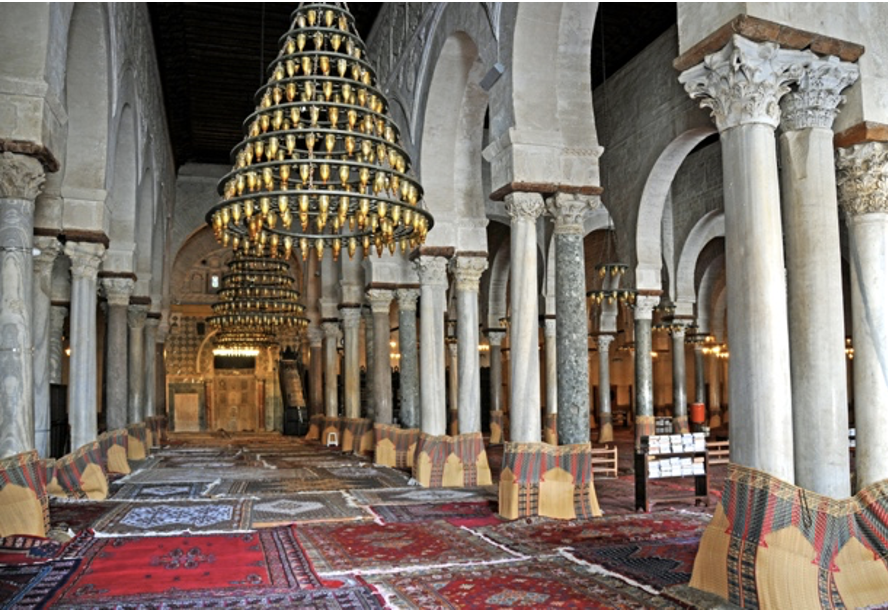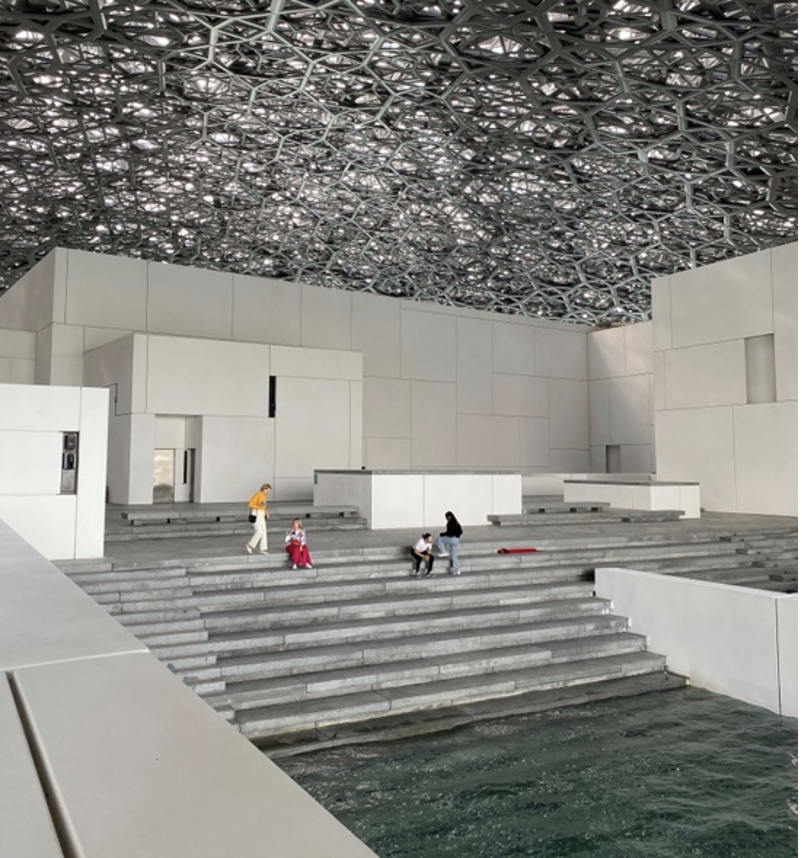Sustainable Design: Islamic Geometric Patterns
Did you know that geometric patterns are a defining characteristic of Islamic art and architecture, gracing mosques, palaces, decorative arts, and even furniture ?
Islamic design is all about the abstract and the beauty of geometry, but it is not just about pretty patterns. Islamic geometric patterns make a beautiful language spoken in shapes that reveal the divine nature of the universe. When we explore this intricate world of the mesmerizing language of geometric patterns, it is crucial to recognize that they have a profound impact on promoting sustainability in various intriguing ways.
How are Islamic Geometric Patterns sustainable?
To start with, IGPs (Islamic Geometric Patterns), help minimize material waste and support eco-friendly construction methods like 3D printing by using repeating and symmetrical designs. These patterns also serve as a means of preserving culture, particularly in Arab societies, contributing to heritage conservation, sustainable tourism, and cultural identity. Additionally, when combined with passive design strategies, such as natural cooling, lighting, and ventilation, IGPs contribute to meeting sustainability goals. Moreover, they take inspiration from the natural world, which encourages environmentally friendly designs rooted in principles like biomimicry, where designs are influenced by the natural world, resulting in environmentally friendly architectural solutions.
Sustainable architecture using IGPs
Geometric patterns are a defining characteristic of Islamic art and architecture, gracing mosques, palaces, decorative arts, and even furniture. They have left an indelible mark on Islamic visual culture. Consequently, it is important to explore their sustainability and environmental impact. Islamic architecture historically adapted to local environmental challenges, using sustainable elements. Traditional buildings, made from simple materials, naturally provide comfort in different climates. With the growing interest in sustainable architecture, elements like orosi (see Figure 1) and mashrabiya have seen a revival. They both follow the same principles as the general girih pattern. They serve as shading screens, offering ornamental beauty and environmental control, including natural light, thermal comfort, and visual convenience. Orosicombines wooden panels with colourful glasses, serving various functions. Mashrabiya not only shields unglazed openings but also decorates building facades.

Image credit: Mohammadreza Ranjazmay Azari, Mohammadreza Bemanian, Mohammadjavad Mahdavinejad, Axel Körner, and Jan Knippers, CC-BY-SA 4.0 DEED via Heritage Science.
Architectural examples employing IGPs
The Great Mosque of Kairouan is among the early examples, where geometric motifs complemented vegetal and floral patterns. At the Ibn-Tulun Mosque, the use of geometrical patterns evolved from a focus on vegetal and floral motifs to include squares, circles, six-point geometrical patterns, hexagons, and eight-point geometrical patterns. The Al-Aqmar Mosque is noted for its remarkable use of geometric patterns in Fatimid architecture, prominently featuring six-point stars alongside a mix of vegetal, floral, and calligraphic decorations. Subsequently, mosques like Al-Salih-Tala’I in Cairo started incorporating six and eight-point stars into the bas-relief sculptural ornamentation on their walls. Not only do these examples illustrate the historical integration and transformation of IGPs within Islamic architecture, but they also emphasize their role in promoting sustainability factors, such as efficient resource use and natural inspiration, which contribute to more environmentally conscious architectural practices.

Image credit : Dennis Jarvis on Flickr, CC-BY-SA 2.0 DEED via Wikimedia Commons.

Image credit: Michael Huniewicz, CC-BY-SA-4.0 DEED via Wikimedia Commons.
IGPs have expanded beyond Muslim-majority countries to places like Iran, Turkey, and Egypt. They are now being creatively adapted for modern designs, transcending cultural boundaries. An example of this is the Louvre Museum in Abu Dhabi, where Islamic patterns are used to create a distinctive dome structure inspired by traditional Islamic lattices.
In conclusion, Islamic Geometric Patterns (IGPs) represent a unique intersection of art, culture, and sustainability. Their mesmerizing language of shapes not only adds to the visual beauty of Islamic design but also serves as a catalyst for sustainable architectural practices.
Throughout our exploration, it has been uncovered how IGPs contribute to sustainability by minimizing material waste, preserving cultural heritage, and incorporating passive design strategies. In essence, the world of Islamic Geometric Patterns is a testament to the harmony of aesthetics and sustainability, echoing a timeless language that continues to

Image credit: Boubloub, CC-BY-SA-4.0 DEED via Wikimedia Commons.
Author
Xuan Wu
Bibliography

